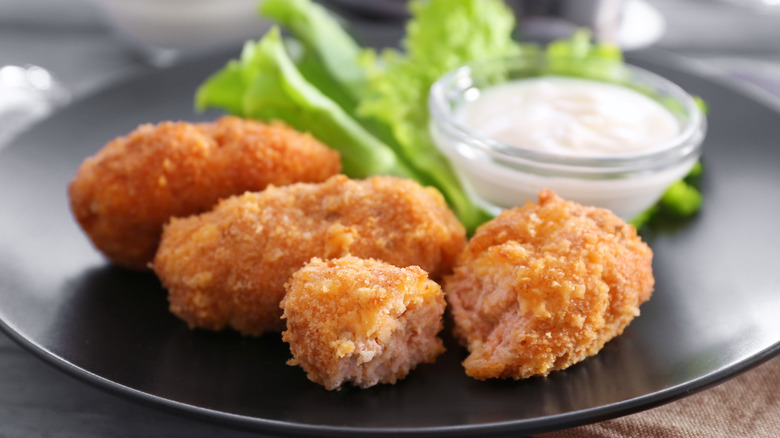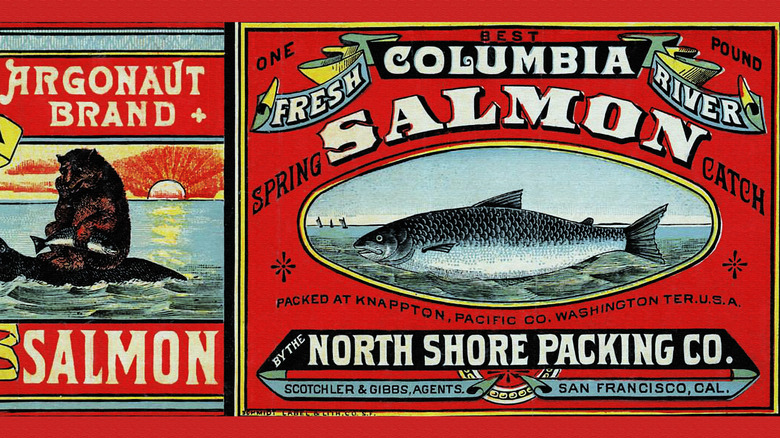The Canned Fish That's A Staple In Southern Food History
Southern cooking is nothing if not resourceful, so it only makes sense that canned fish would play a part in Southern food history. But the reason why canned salmon entered the Southern diet is an unlikely combination of genius marketing, economic hardship, government subsidies, and dietary deficiencies, all occurring in the first half of the 20th century. Canned salmon production began in earnest around the mid-to-late 19th century, with entire towns being built around the canneries, particularly in Alaska and the Pacific Northwest (where salmon was a key part of Indigenous culture). At one point, there were more than 200 canneries along the northwest coast, with many exporting to foreign countries, as canned fish hadn't yet caught on back home. (It took a while for folks to figure out how to use canned seafood.)
It wasn't until an enterprising Alaskan cannery decided to market their salmon a little more aggressively at the 1904 St. Louis World's Fair that salmon became known beyond the northwest coast. Salmon packers wanted to reach New England, the Midwest, and the South, so they chose a growing city in West Virginia to test their re-branded product alongside specialty salmon cookbooks. The advertising campaign was a wild success, with salmon quickly establishing itself in these new markets — and then along came the Great Depression. The ensuing economic hardship was what cemented canned salmon in Southern cuisine (as well as other Depression-era dishes like water pie).
Canned salmon and the Southern diet
One of the main ingredients in a Southerner's diet back then was corn, putting them at risk for pellagra, a disease caused by a lack of Vitamin B3 (also known as niacin). During the Depression, Southerners often had little access to fresh produce, eggs, milk, and meat — all essential in preventing this dietary disease.
Though food science was in its infancy, the U.S. Departments of Health and Agriculture got to work coming up with nutritionally complete recipes. Desperate to get non-perishable, protein-rich foods to the masses of nutritionally-deficient Southerners, New Deal subsidies lowered the price of canned salmon to less than five cents a can. Salmon croquettes were one of most popular recipes from the branded cookbook marketing blitz, popularly known in the South as salmon "patties." The recipe is simple enough: Drain the canned salmon, build a patty with egg and flour or saltine crackers as your binder, and season with salt and pepper before frying until golden.
The dish was cheap, easy, and, most importantly, nutritionally adequate. Thanks to those inventive salmon marketers and a little help from the federal government, canned salmon earned a place in the canon of Southern cooking by the end of WWII. Southern mommas everywhere would serve these patties at church potlucks and Sunday suppers. Fast forwarding to modern times, if you find yourself below the Mason-Dixon line, don't be surprised to see salmon patties at your next cocktail party, served on a silver platter with a mayonnaise-based sauce and fresh lemon wedges.

